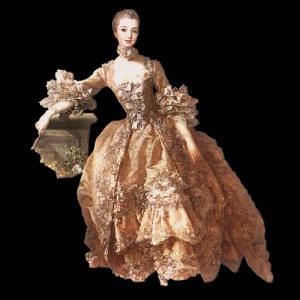Words here Words here Words here Words here



Fakirs are thought by some to use trickery to convince onlookers that they are performing miraculous feats, but some people seem to be convinced that the fakirs actually are doing something supernatural when they do the rope trick. It has been suggested that Hindu fakirs use some form of yoga (training) to accomplish their notorious rope tricks. They are also reknown for their ability to charm snakes.




 The field of "thoughtography" originated with Tomokichi Fukarai, president
of the Psychical Institute of Japan. Chicagoan Ted Serios became reknown
in the 1970's for his alleged ability to produce images on blank film
simply by projecting mental images to the film inside the camera.
Sometimes an image was chosen for Serios to project onto the film, but he
was not informed as to what the image was. Allegedly, the very images
chosen appeared on the film. Serios apparently had a reputation as a
remote viewer.
The field of "thoughtography" originated with Tomokichi Fukarai, president
of the Psychical Institute of Japan. Chicagoan Ted Serios became reknown
in the 1970's for his alleged ability to produce images on blank film
simply by projecting mental images to the film inside the camera.
Sometimes an image was chosen for Serios to project onto the film, but he
was not informed as to what the image was. Allegedly, the very images
chosen appeared on the film. Serios apparently had a reputation as a
remote viewer. Serios's paranormal abilities were studied by psychoanalyst Jules Eisenbud and Eisenbud was impressed by the results of testing Serios. Eisenbud wrote a book about Serios called "The World of Ted Serios: Thoughtography Studies of an Extraordinary Mind", published in 1967. Evidently, once Serios produced a photo of an aircraft hangar that had a sign on the hangar "Royal Cainadian Mounted Police", instead of the correct spelling of the word "Canadian".
Serios used a cardboard or a plastic tube he called a "gizmo" that he said helped facilitate his thoughtography. Some skeptics charged that Serios was using some sort of device (within the "gizmo") that made the photos appear and, therefore, Ted Serios was a fraud. Ted Serios was apparently never caught using any type of trickery, however.

 St. Germain was a count and alchemist who became
part of King Louis XV's and Madame de Pompadour's (1721-1764) entourage.
Madame de Pompadour apparently was impressed when it appeared that St.
Germain saved one of her friends from death.
St. Germain was a count and alchemist who became
part of King Louis XV's and Madame de Pompadour's (1721-1764) entourage.
Madame de Pompadour apparently was impressed when it appeared that St.
Germain saved one of her friends from death.
No one seemed to be certain of his parentage, though some believed him to be the son of a Czechoslovakian nobleman. St. Germain allegedly served in Catherine The Great of Russia's army where he was nicknamed "General Welldone". In Nuremberg, he was known as "Prince Rakoczy". One of St. Germain's friends was the notorious Casanova.
He was allegedly immortal. He was also apparently remarkable for what seemed to be his perpetual youthfulness--people claimed that he simply did not age. Many seemed to be convinced that St. Germain was hundreds of years old--he claimed to be 300 years old.
St. Germain was not only an alchemist, but multi-lingual, and a violin virtuoso. The famed philosopher Voltaire seemed to believe that Count St. Germain knew just about everything and was immortal. Of course, some people regarded him as a charlatan and a madman.
Oddly, no one, it is alleged, ever saw St. Germain eat anything but an oatmeal porridge. Did he do that for "effect" or did he look so youthful because he dined on oatmeal?
In 1972, a Frenchman named Richard Chanfray claimed to be the immortal Count St. Germain. Chanfray performed on television--he reportedly transmuted lead into gold.
In December of 1872, the crew of a ship called the Dei Gratia came upon the ship the Marie Celeste in the middle of the Atlantic ocean. No one was found aboard the ship. An opened and intact bottle of cough medicine was found. It appeared that a meal had been prepared for the crew, but not eaten. The lifeboat was gone. There were no signs of a struggle and no indication of what happened to the crew.
The Marie Celeste had departed from New York on November 7, 1872. The captain was Benjamin Briggs. The captain, his wife and daughter and eight crew members were aboard the Mary Celeste. The ship was carrying crude alcohol to Genoa, Italy.
Some have speculated that pirates attacked the ship, though there were no signs of a struggle. The Marie Celeste had a history of being considered a "jinxed" ship. There had been fires and various tragedies associated with the ship in the past.
To this day, no one has ever discovered what happened to those aboard the Marie Celeste.
Sarah Winchester was the widow of the heir to the Winchester Rifle fortune. Sarah believed that if she didn't keep adding on to her home, the ghosts of those who had been killed by the Winchester rifle would kill her. She had hallways, stairs and passages constructed that lead to nowhere.
Apparently, Sarah believed that if she made the mansion a maze of convolution, the ghosts could not find her. It has been said that Sarah had visited a psychic who told her that if she kept on building, adding on to the mansion, she would not die. Sarah insisted that stairs have thirteen steps and that chandeliers have thirteen lights. One can feel the confusion intended by touring the mansion. Stairs lead to walls, and hallways wind around and around.


Just weeks before D-Day during World War II, the daily crossword puzzles in a London newspaper (London Daily Telegraph) contained code words that related to the Allied invasion of Normandy that took place on June 6, 1944. Of course, the military was concerned about secret code words being in a newspaper puzzle. The word "overlord" was one of the words and it related to the invasion itself. The words "Omaha" and "Utah" were other code words and related to the beaches in Normandy.
The creator of the puzzle, Leonard S. Dawes, was questioned about his use of the code words, but ultimately was not charged with any crime. Could he have somehow picked up the code words from the psychic ether and inadvertently used them in the creation of his crossword puzzle?
Snakecharmer by Animan
Fakirs by Jo's World
Background by Spinney